It’s time for an update to my 18th century buckram making adventures! Back in 2019 (how did the time go so fast!?!) I posted about experiments in making buckram from both historically accurate gum tragacanth, and modern xanthan gum.
Both worked, but I wasn’t 100% happy with either – tragacanth was only available in pre-mixed form in NZ at the time, and thus prohibitively expensive. It also smelled to high heaven. Xanthan gum, whilst cheap, wasn’t accurate and doesn’t have the fabric-nibbling-creepy-crawly-retardant qualities of tragacanth.
So I read every source I could find on 18th century gums, and buckram making. Garsault’s 1767 L’Art du Tailleur describes buckram as:
‘Bougran est fait de vieux draps de lit ou de vieille toile à voile gommés’;’
‘buckram is made from old sheets or old gummed canvas’ (according to my very poor French) and;
Bougran ou Treillis : toile de chanvre gommée & calendrée’;
‘Buckram or Trellis: gummed and calendered hemp canvas’.
Other sources mention gum, paste, starch, or glue. So any product called by those names in the 18th century is plausible as a buckram stiffener. I pondered whether I was game enough to try to make rabbit-skin glue. Then realised that what might be the perfect solution was right in front of my face: gum arabic!
Gum arabic has been used since antiquity as a binder and paint and textile printing. It was certainly in use in Europe in the 18th century. After the slave trade, the gum arabic trade was the leading drivers of French and British colonisation in West Africa in the 18th century.
It was primarily used as a binder for fabric printing, so we have both documentation of its use in Europe in the 18th century, and documentation that it was used on fabric. So using gum arabic to make buckram is very plausible as an 18th century option for buckram making.
Gum arabic was certainly being used as a starch and stiffener in the mid-19th century. The House Book: or A Manual of Domestic Economy gives instructions on making gum arabic starch, and on using it to starch dresses, lace, and veils, amongst other things. (note that the book frequently calls it gum arable water)
How to make buckram with gum arabic
Source your gum arabic powder.
It’s also called acacia gum or acacia Senegal gum, because it comes from the gum of the acacia tree. You can get it from specialty food stores as well as makeup/cosmetic supply stores, and it’s widely available on the internet. It’s available in both food safe varieties, and not food safe varieties. The later is usually cheaper. Since you’re not using it for food, non-food safe is just fine. It may have a few impurities or be a little courser than the food-safe option, that’s not a problem.
You’ll find that there are also pre-mixed bottles of gum arabic available from art stores: avoid these. They are very expensive, and you won’t be able to control how much stiffness they creates.
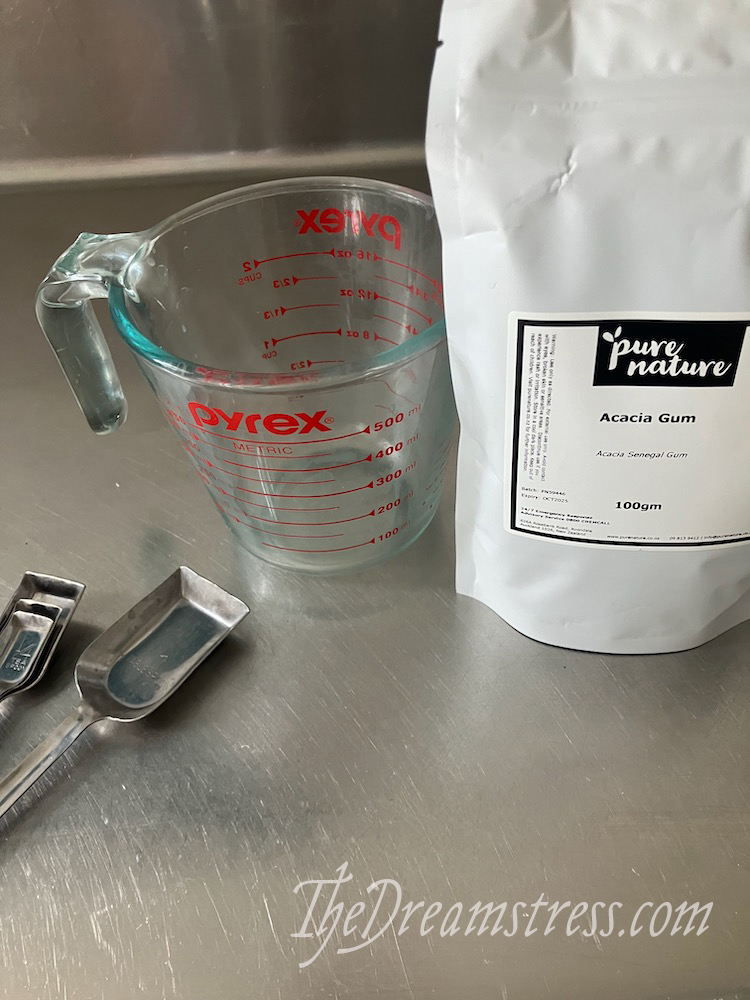
Proportions:
I find that 1 tablespoon of gum arabic powder per 100ml of water is perfect for making a nice stiff buckram, but your proportions will vary slightly based on your powder, and the fabric you’re applying it too.
If 1T to 100ml is too thick you can always add more water, if too thin you can always add more powder.
Mixing:
Add your gum arabic powder to cold water. Adding it to hot will melt the outside layer of powder, forming a skin around the inside clump of powder so it doesn’t dissolve nicely.
Mix thoroughly to dissolve, and then bring your water to a boil, stirring all the while. You can do this over the stove, or by microwaving it multiple times, bringing it out and stirring it in between.
Once your water is hot, it should thicken slightly, but will still be very liquid. It will not as thick and goopy as bought gum tragacanth will be.
Gumming your fabric:
Have your clean, dry, pre-washed linen fabric read to go. Use plastic sheeting under it to protect your working surface and avoid staining.
Spread out your fabric and paint on your gum arabic solution!
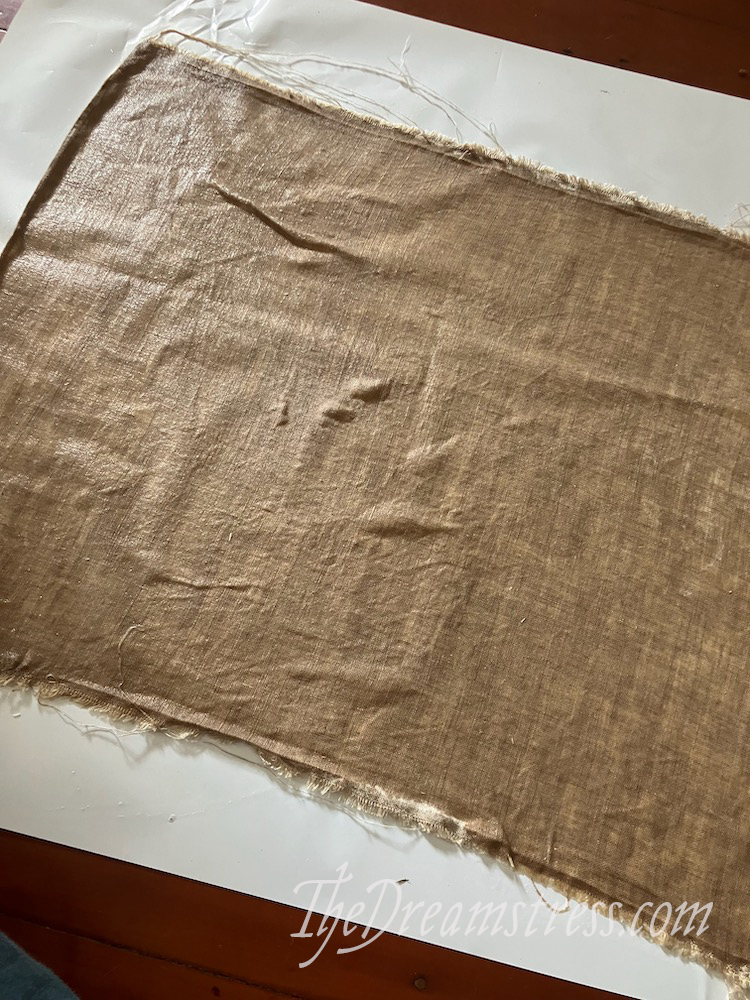
Let it dry until it is just the tiniest bit tacky. I use a hanging rack with an old cloth underneath to collect the drips.
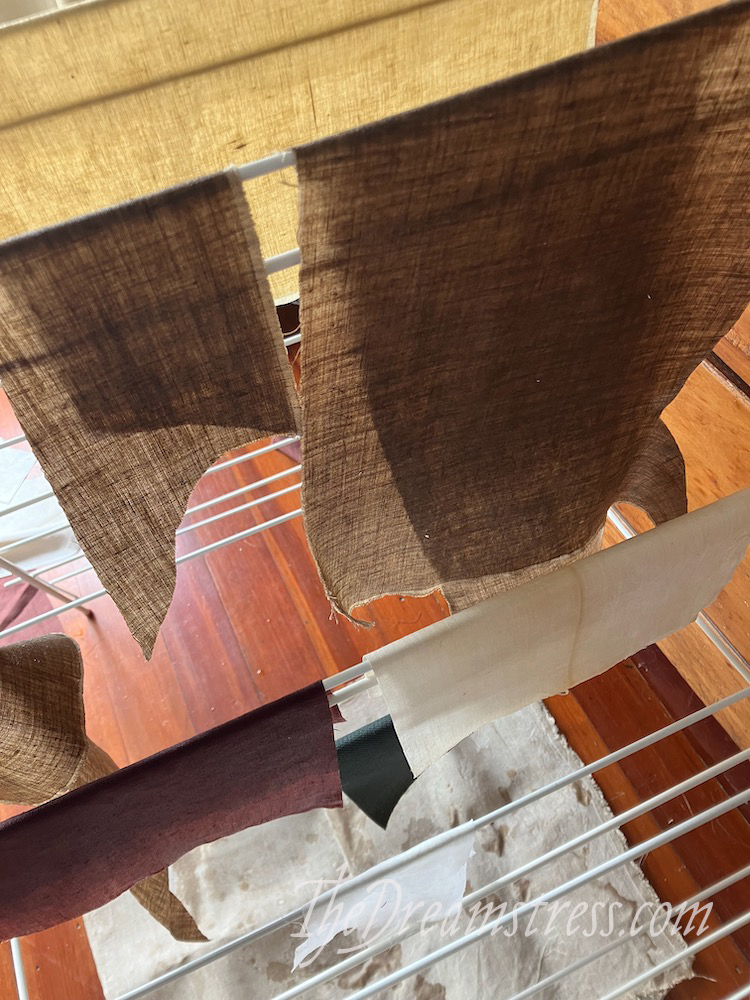
When it’s almost dry, take it off and press it with an iron. Use an ironing cloth to avoid getting gum on your iron.
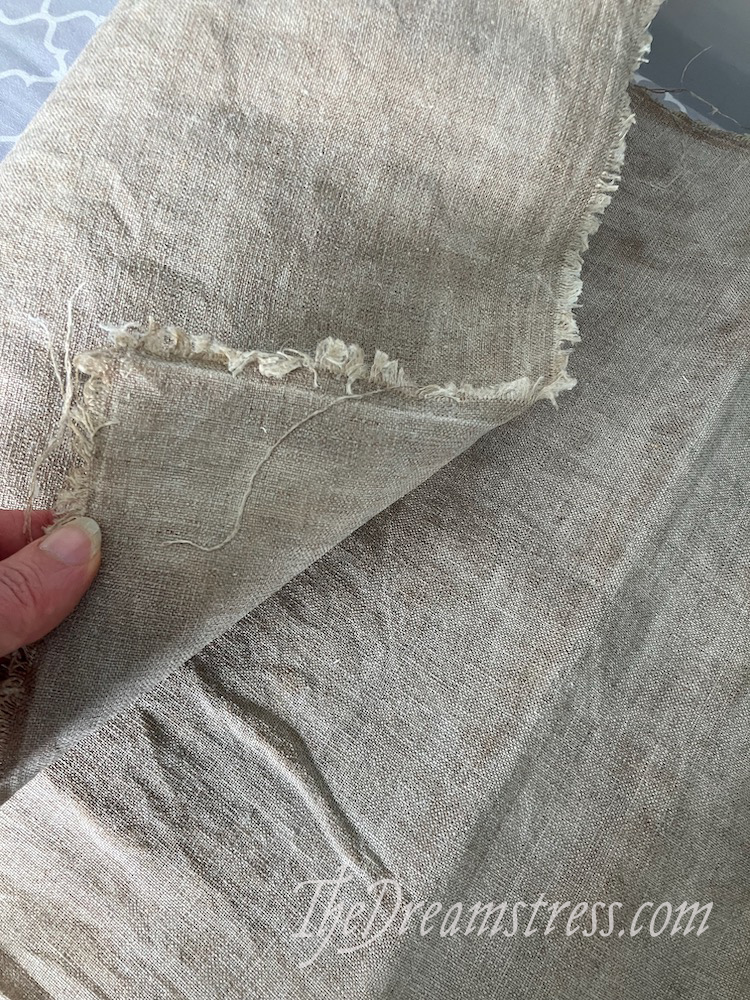
Pressing it will make your buckram nice and smooth, and lock the gum to the fabric. If you let your gum get totally dry just spritz the buckram with a little water.
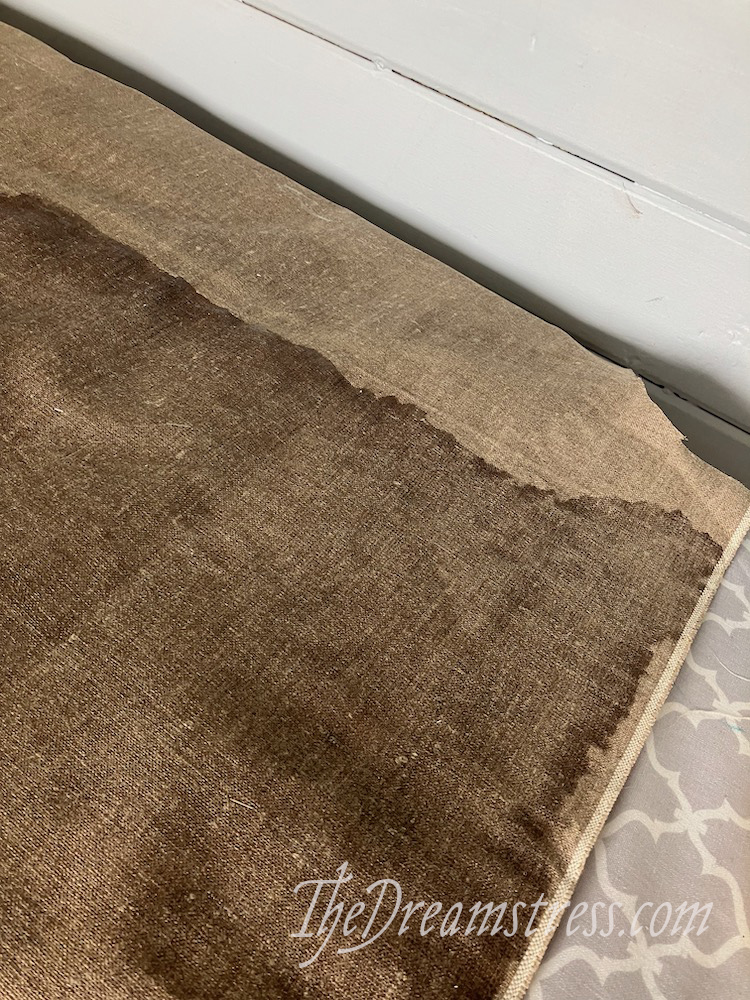
Ready to press:
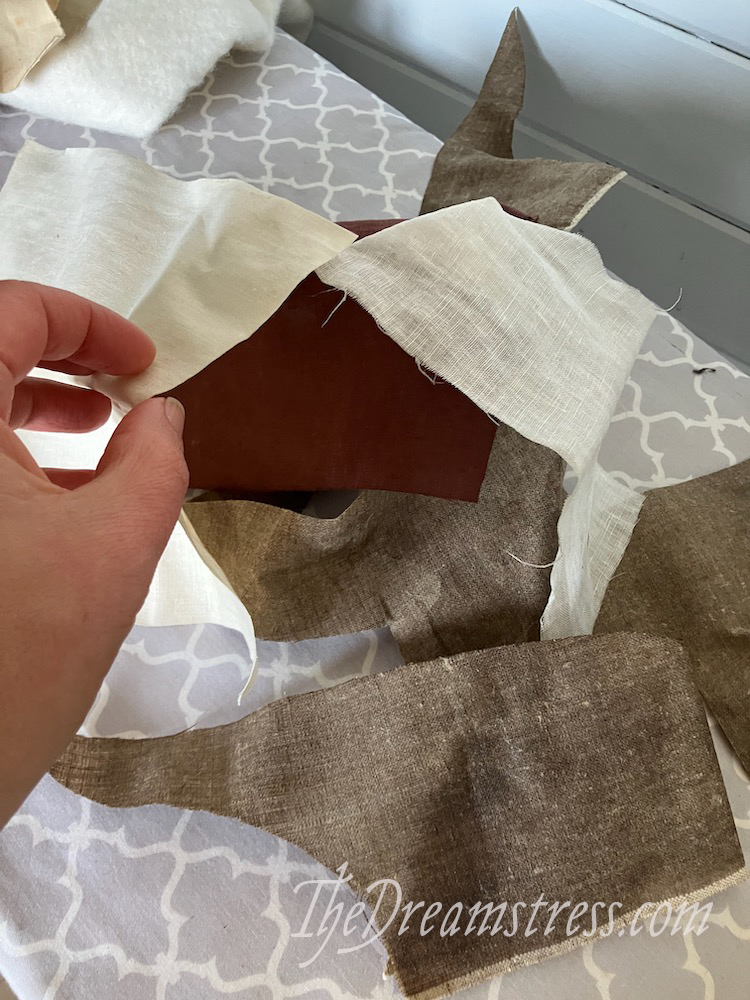
All pressed and nice:
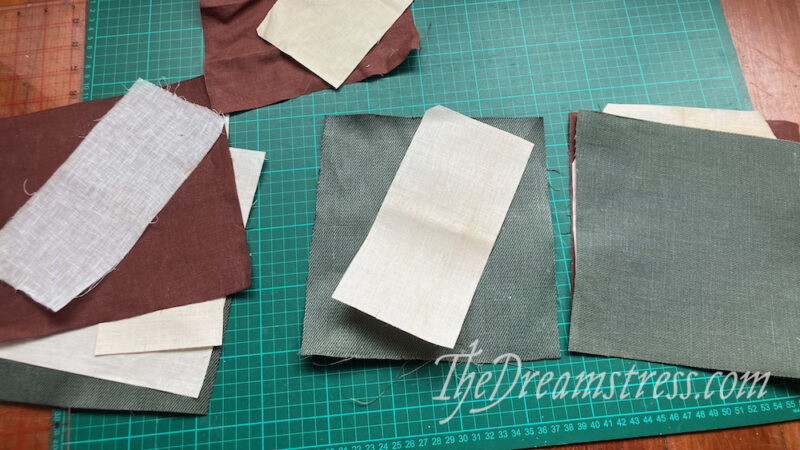
And here it is done:
Comparing buckram made with gum arabic, gum tragacanth, and xanthan gum:
And how do the three different types of gum work? Here’s a comparison:
Cost:
Gum arabic was actually the cheapest, at NZ$13 for 100g (buckram for approx 10 pairs of stays – $1.30 per pair), compared to NZ$22 for the same amount of xanthan (buckram for approx 15 pairs of stays – $1.50 per pair), and NZ$27 for gum tragacanth powder (now available in NZ, I’m so excited! I’ll be trying that next) (buckram for approximately 15 pairs of stays – $1.80 per pair) or NZ $34 for a tiny bottle that would only do one pair – (($34 per pair!))
Seriously, this bottle was $34:
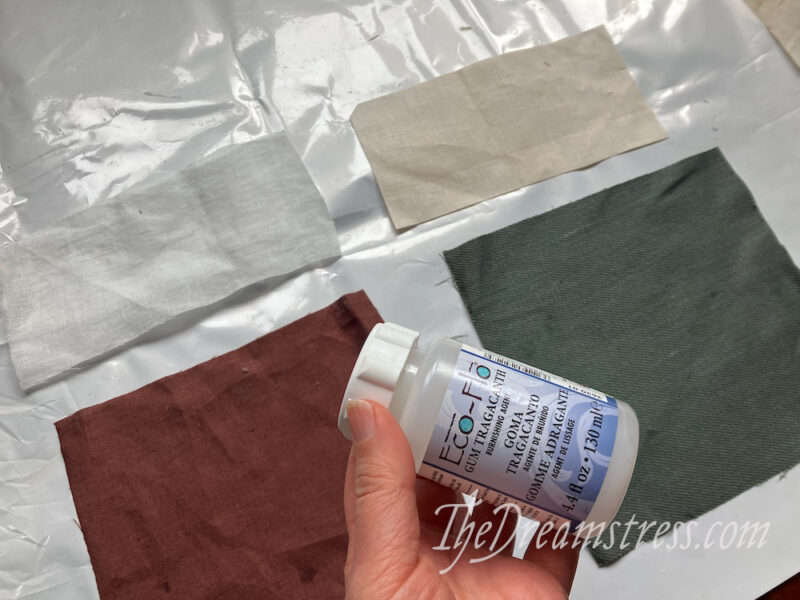
However, I was able to get xanthan gum at a local grocery store, but had to pay approx $6 shipping each on the others, so their actual cost per pair is a little higher.
Stiffness:
All three had similar stiffnessess, but it was easiest to get the exact stiffness I required with gum arabia.
Pre-mixed gum tragacanth was the least effective stiffener, but only by a hair.
It would probably be equally easy to get the exact stiffness required from powdered tragacanth.
Durability:
I will report back on how each of these last as they age and wear.
The science says that gum arabic and gum tragacanth should last better, as they penetrate the fabric more, and have antibacterial and anti-mould qualities.
Gum tragacanth may be slightly better at resisting moisture than gum arabic, and thus last longer in a situation where it is exposed to body heat and humidity (as in stays).
Shrinkage:
Some people have reported shrinkage when making linen buckram, so I needed to test that to see if it is safe to pre-cut your linen pieces, and then apply gum to turn them into buckram.
My samples above were cut as 20cm squares, and 20x10cm rectangles, so I could test if there was any shrinkage after applying and drying the different gums.
There was 0% shrinkage in any of my samples, but the very lightweight linen experienced some warping because the pressure of brushing the gum on pushed the fabric out of shape. I was able to return them to their exact shape with ironing.
My conclusion is that shrinkage is uncommon on pure linen, but to be safest its best to pre-treat your whole piece of fabric, and then cut your pieces once your buckram is totally dried and set.
Historical Accuracy:
Gum tragacanth is fully documented, gum arabic is totally probably but not absolutely documented for staymaking, and xanthan gum is a 20th century invention, so absolutely not accurate.
So which gum works best for buckram making?
I would say that powdered gum tragacanth is the best choice, by the tiniest possible margin, because it has less of a chance of softening from body moisture. However, gum arabic is so close behind that it is a totally acceptable choice if powdered gum tragacanth is not available.
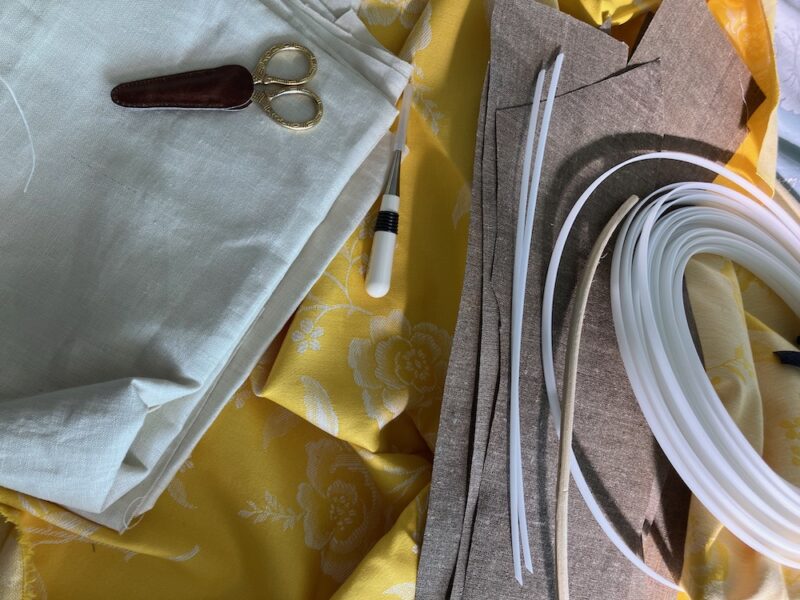
Now, go forth and make buckram, so we can make stays!

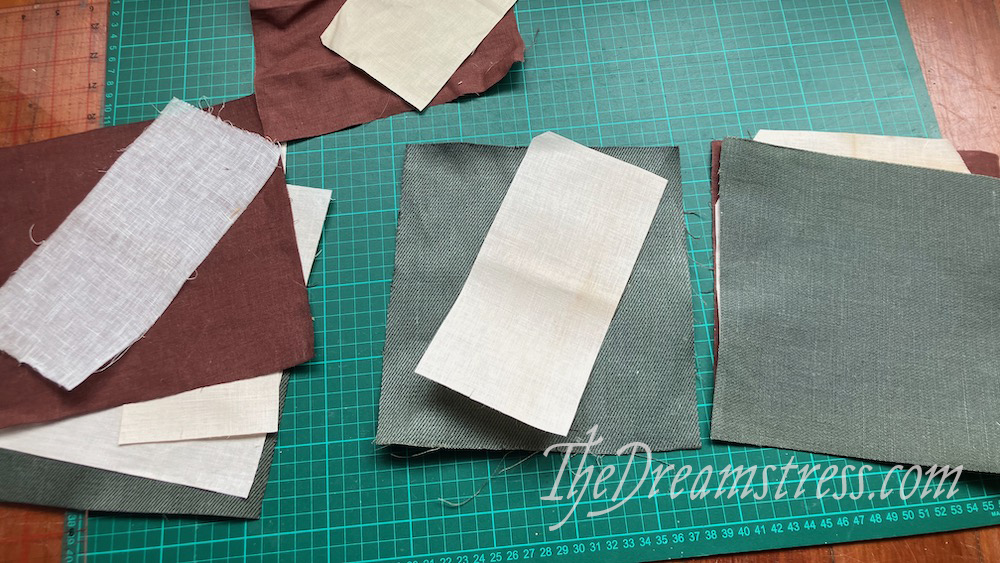
Hooray for careful experiments! They make such a difference in our understanding.
Note on using gum arabic: in high-humidity areas such as where I live, being outdoors for any length of time in summertime often means that a person is simply running with perspiration. I’ve had it go through all layers of a 1790s costume, stays included, although the stays had fewer bones. Ugh. Makes me wonder if gum tragacanth would make most sense in such settings.
Very best,
Natalie across several ponds
I made used the gum Arabic but did not heat the water. It worked fine
Thank you for this experiment! Would you recommend this buckram for making hats, as well? Now that buckram production in the US has essentially ended, it would be great to be able to make my own! (I’m not yet ready to dive into the world of thermoplastics for making hats.)
I haven’t experimented with this type of buckram for hatmaking, but that is on my list to do!
Thank you for an excellent and useful article.